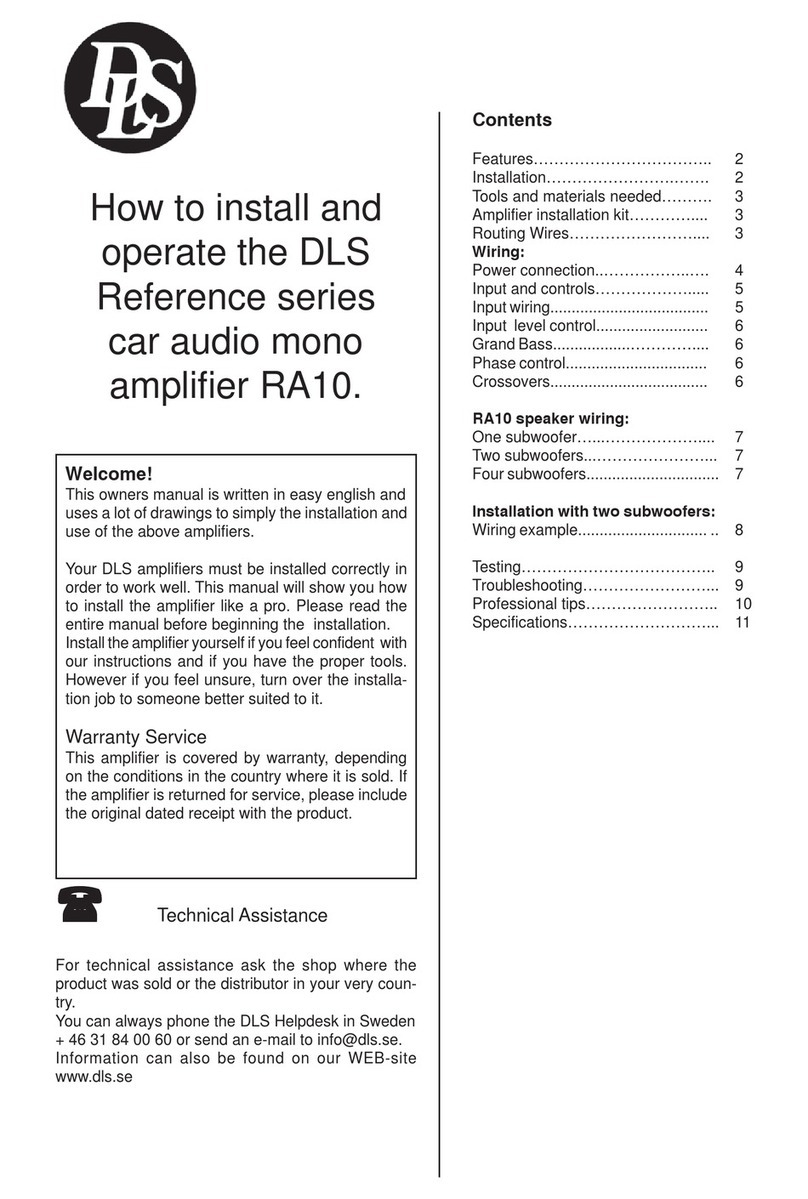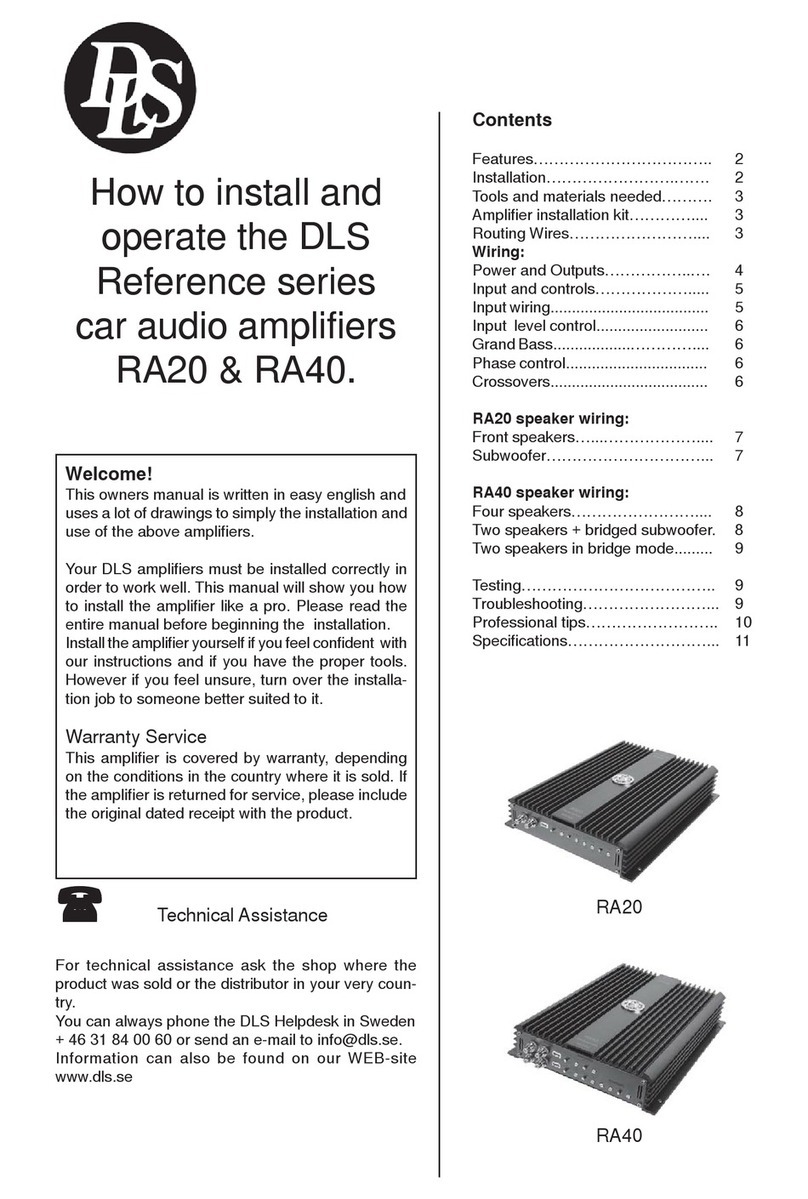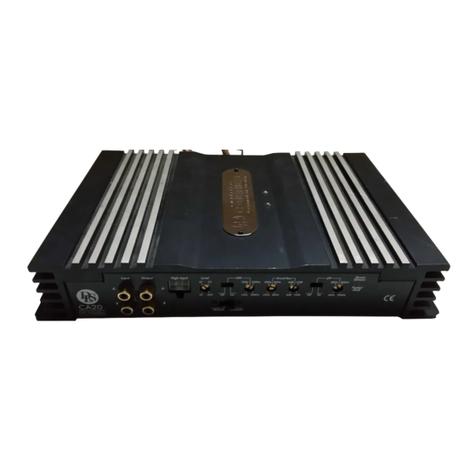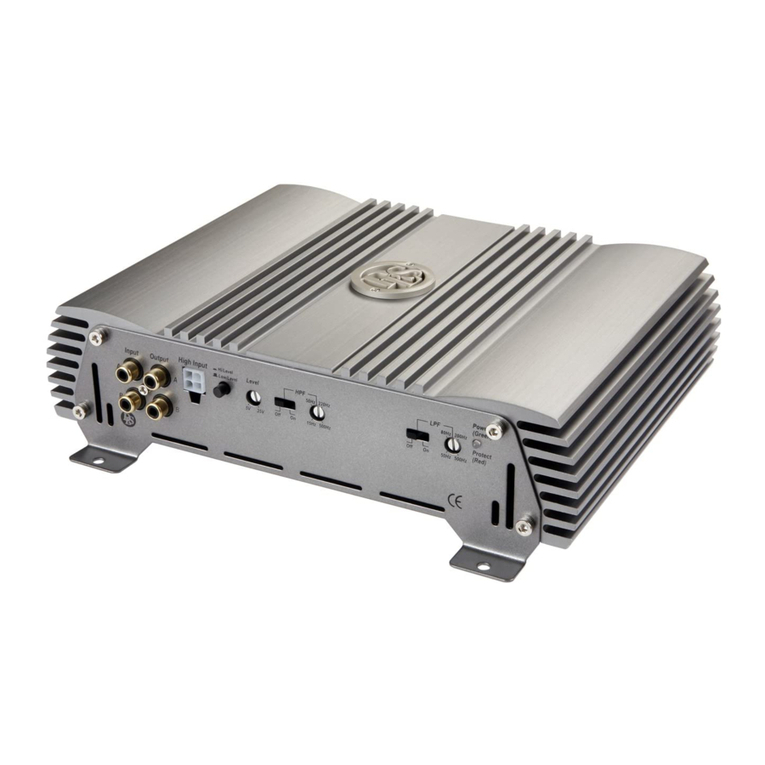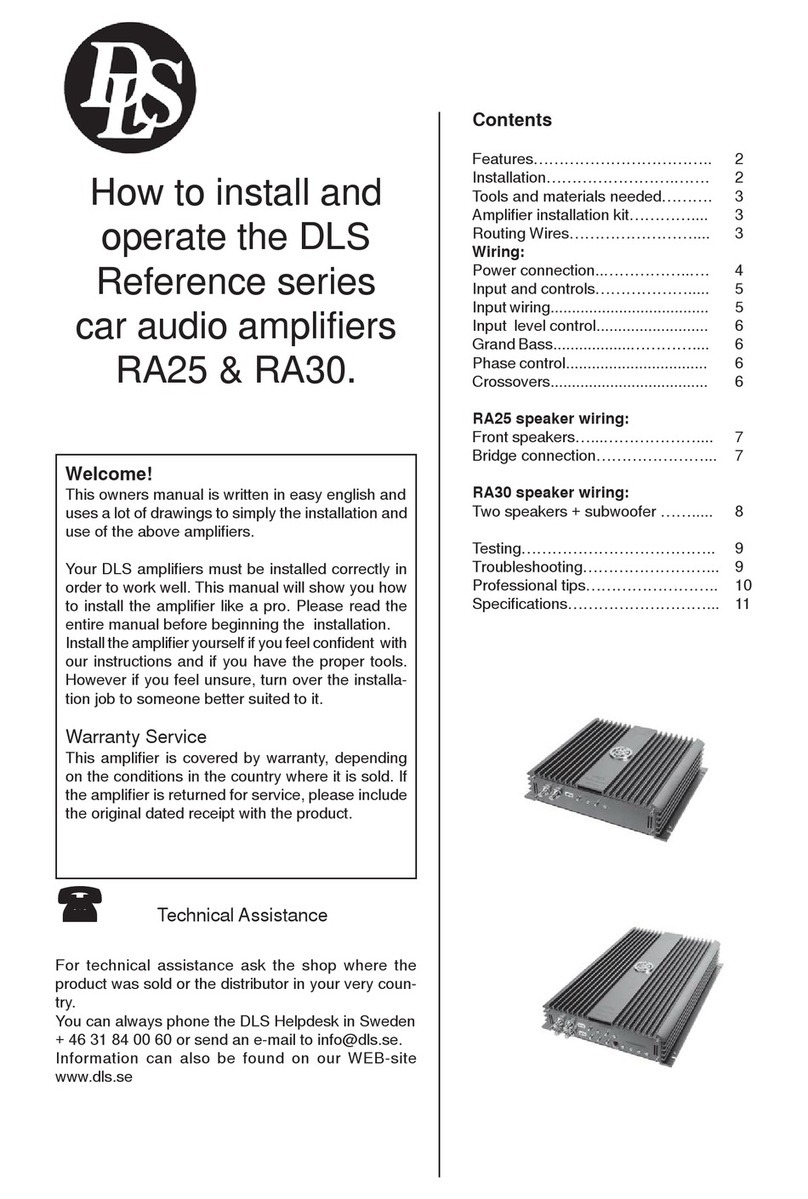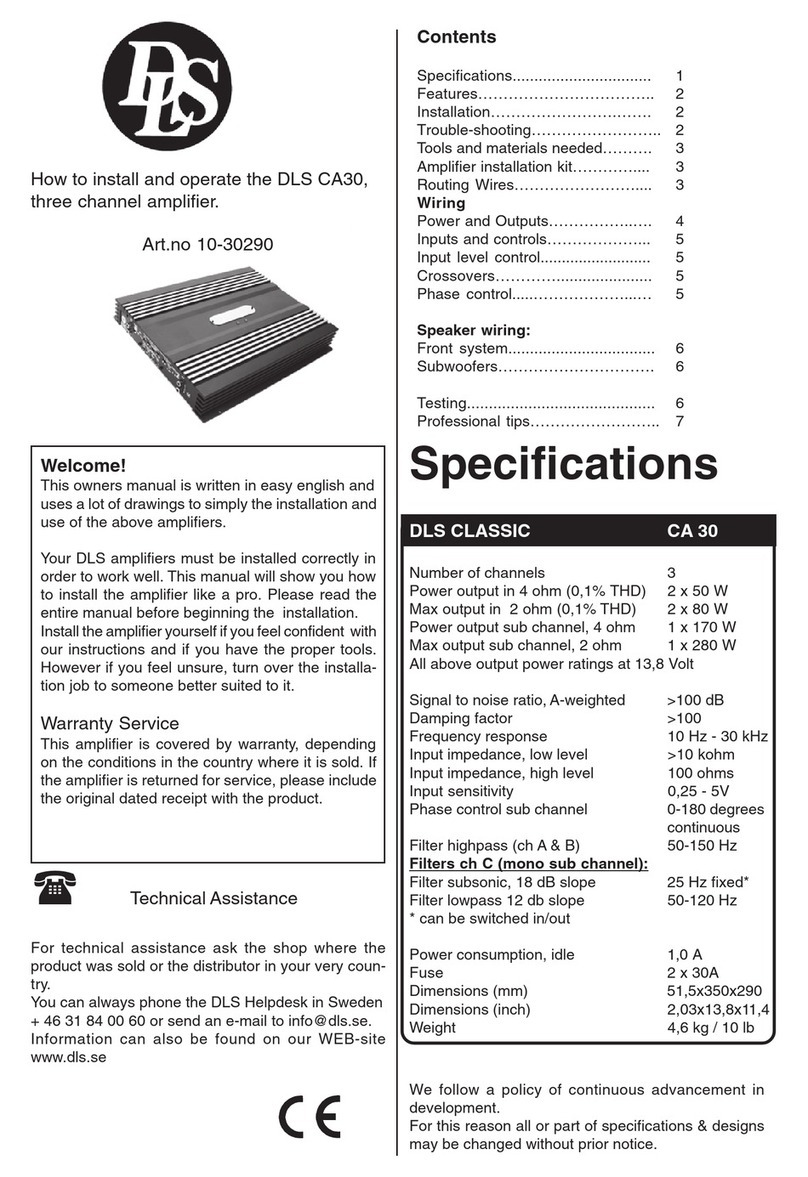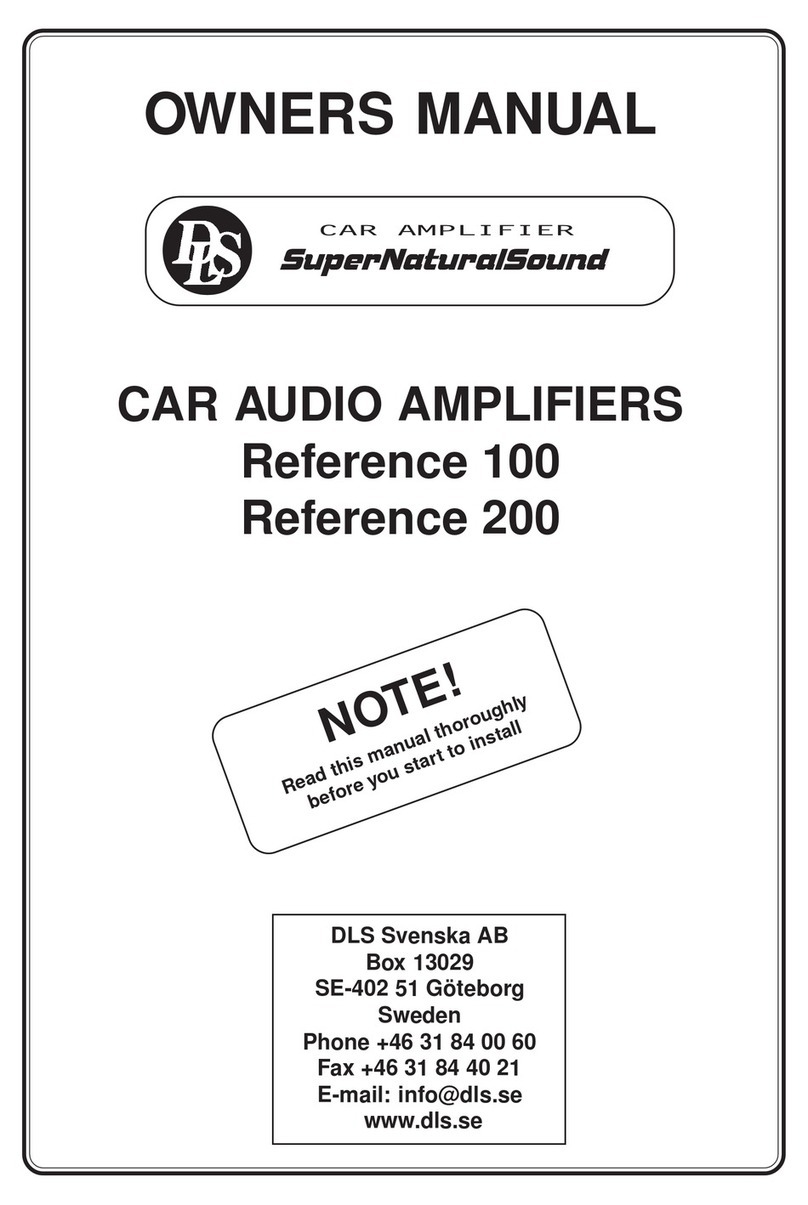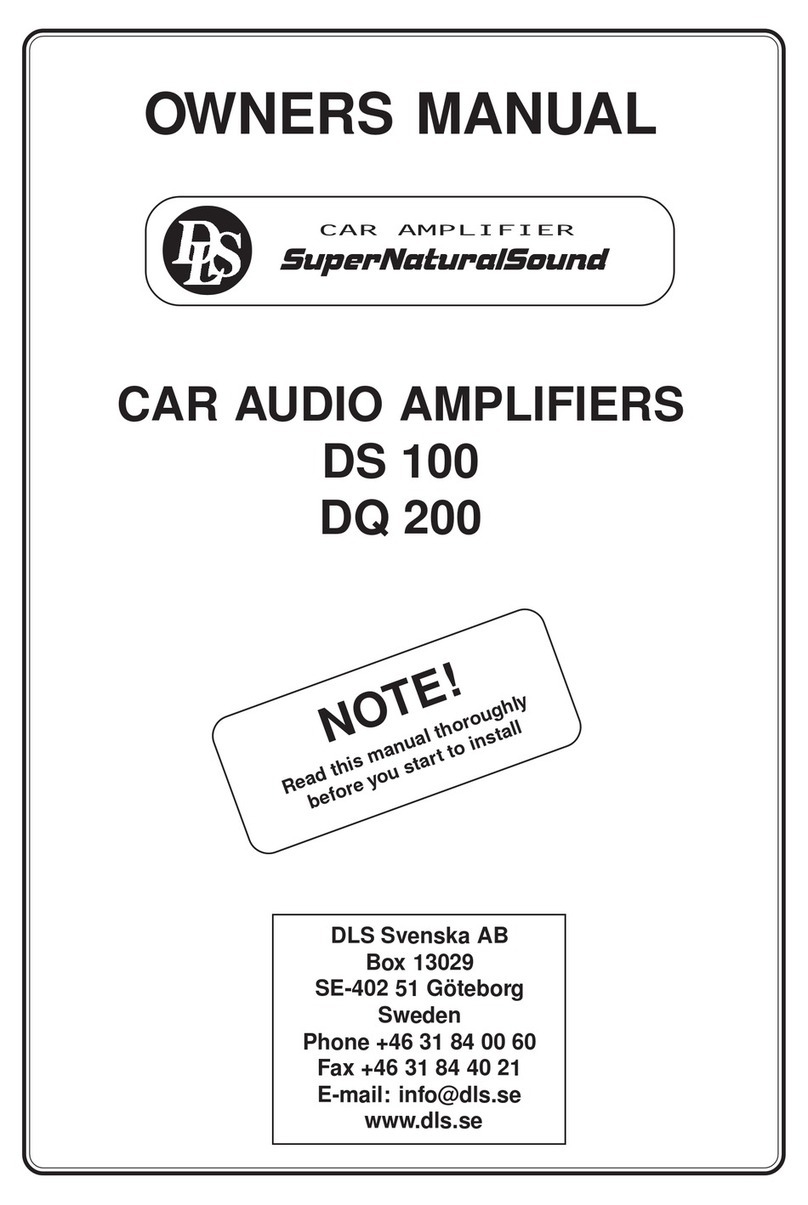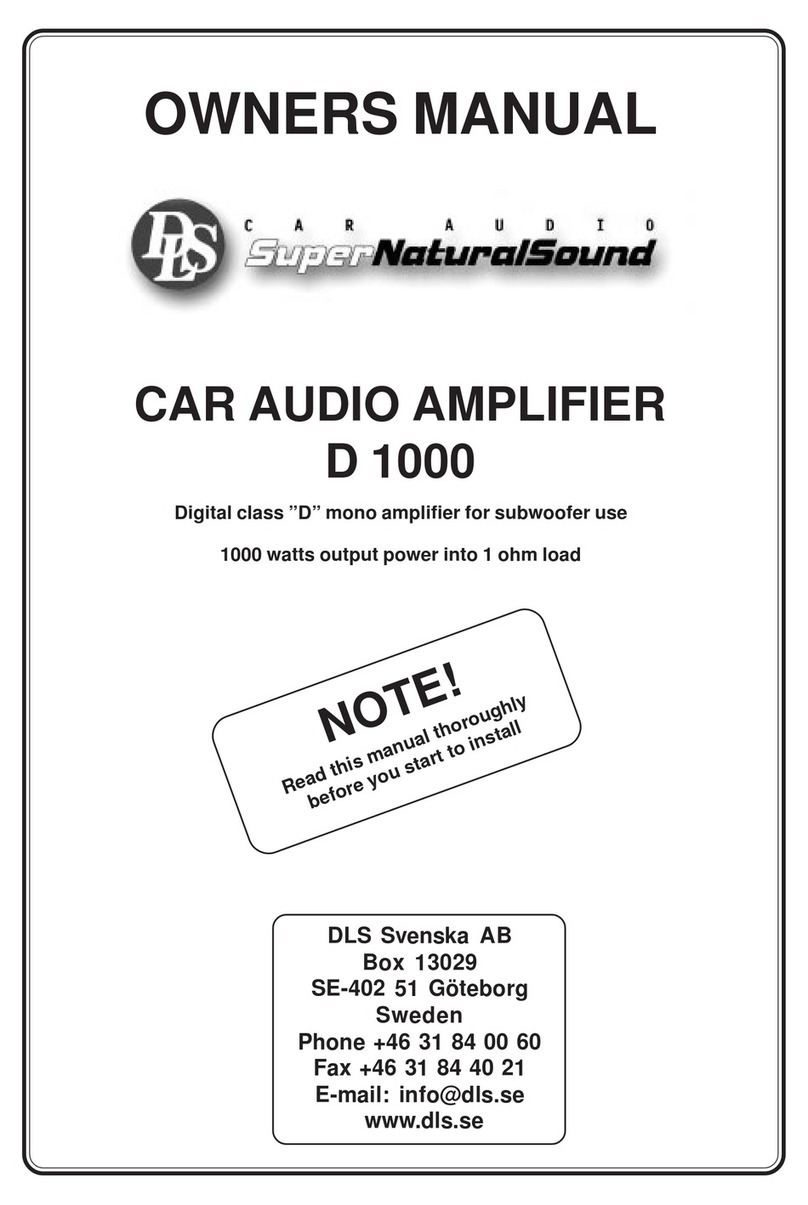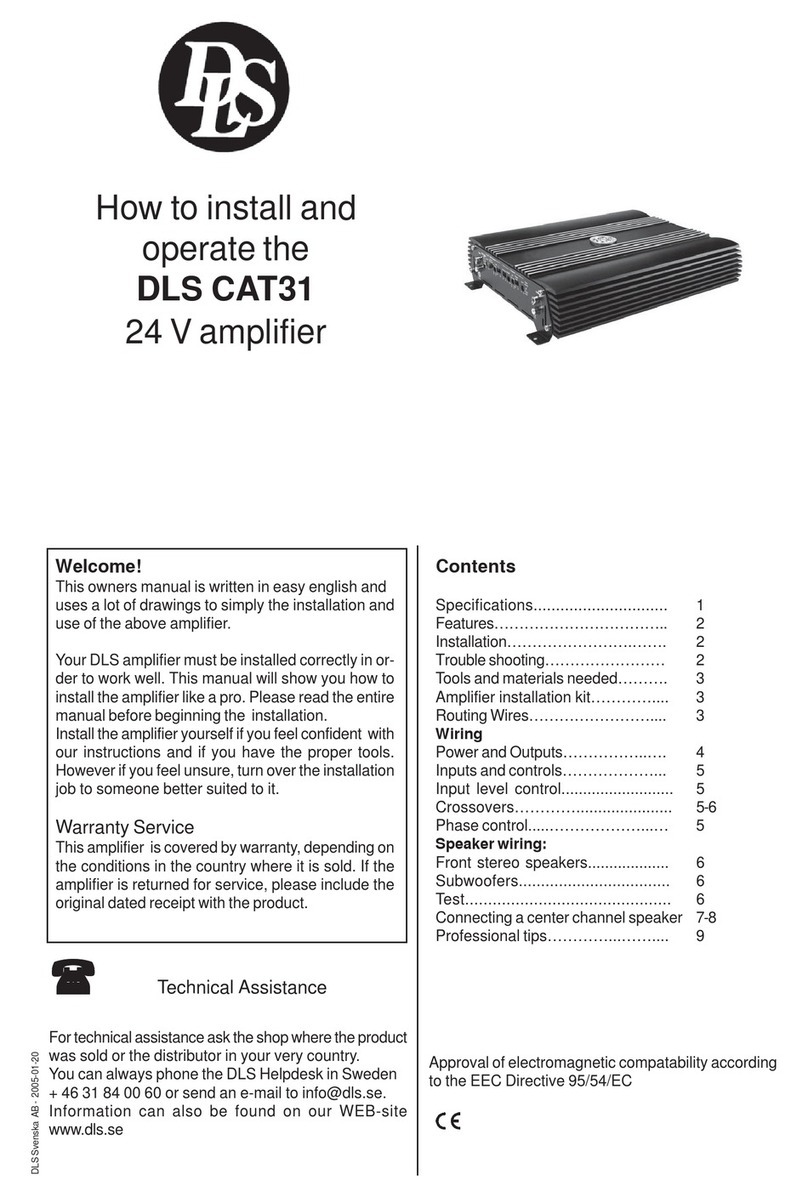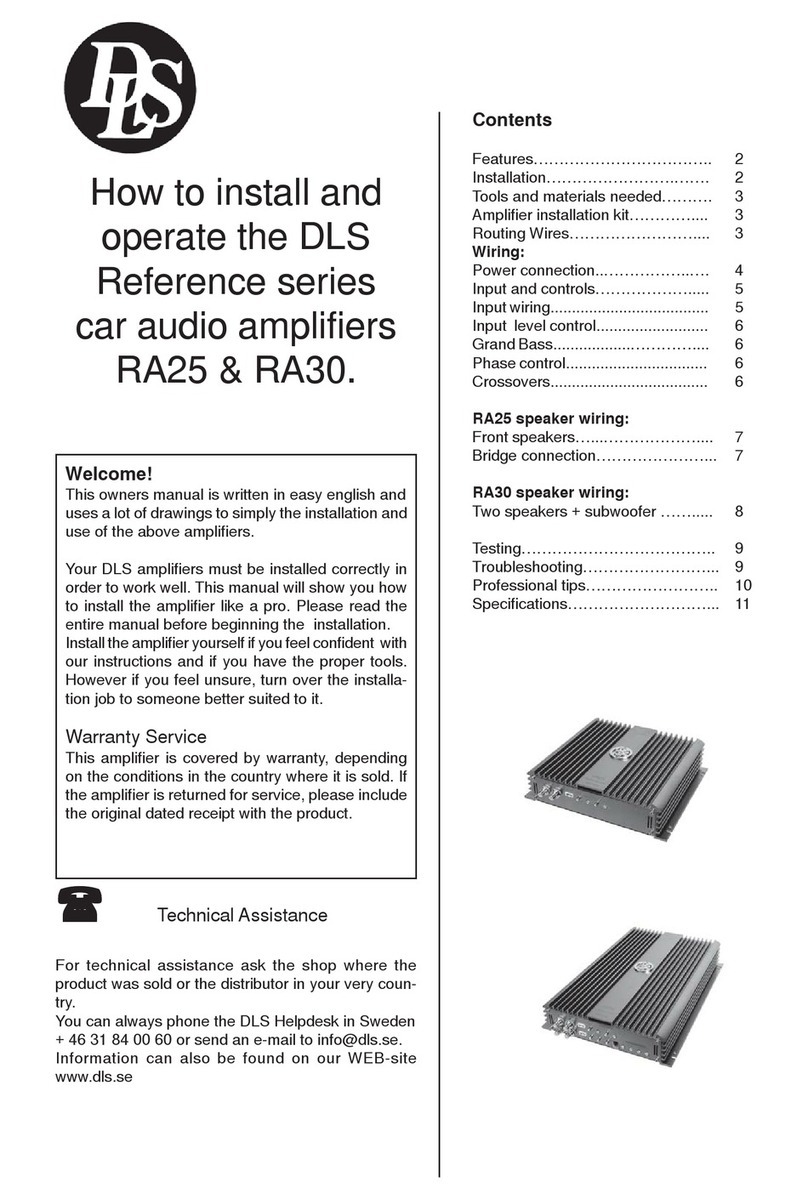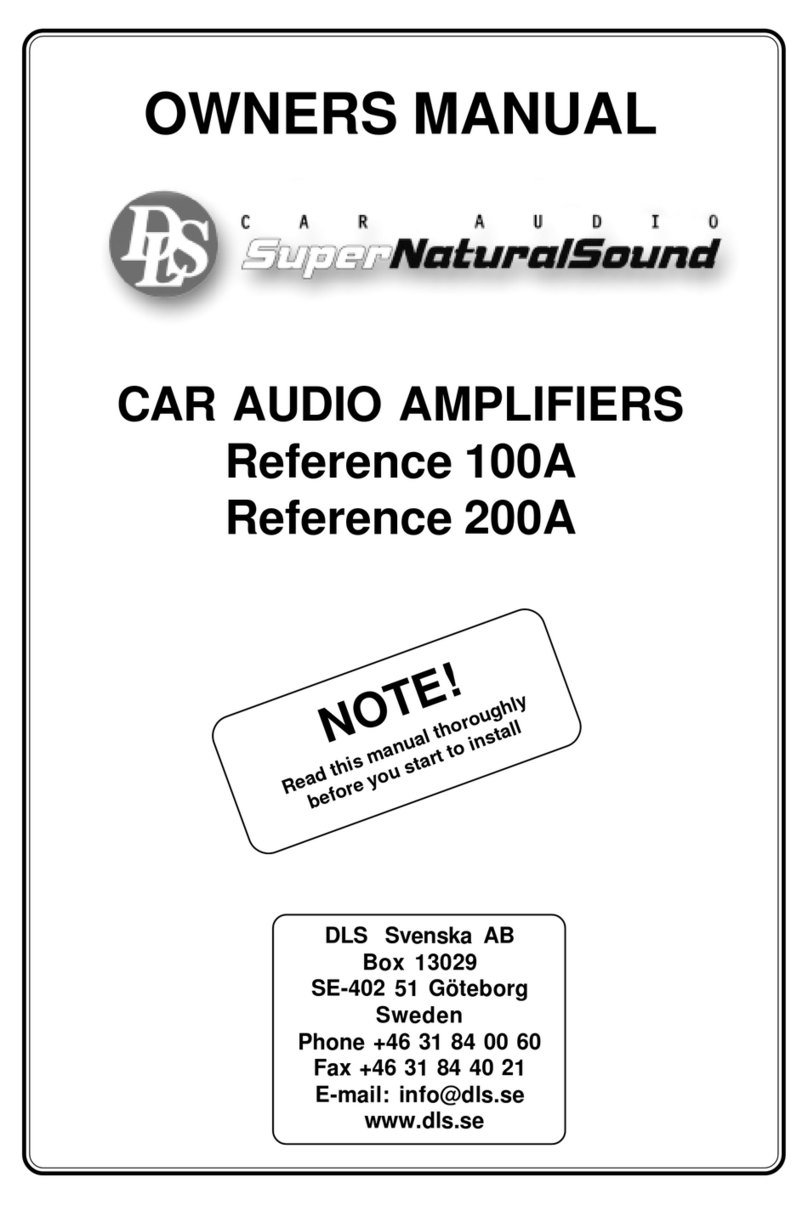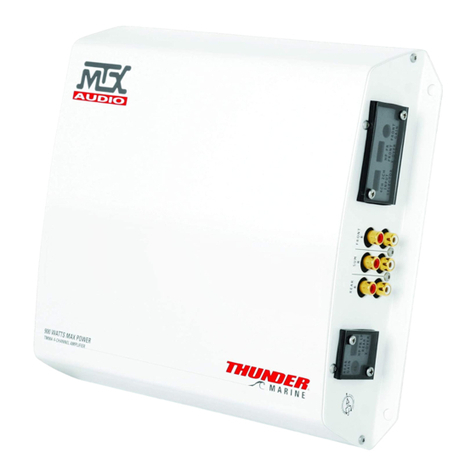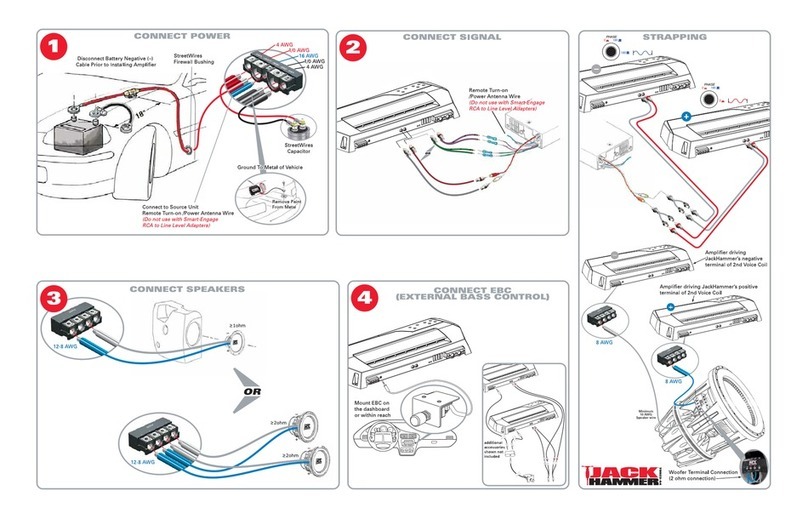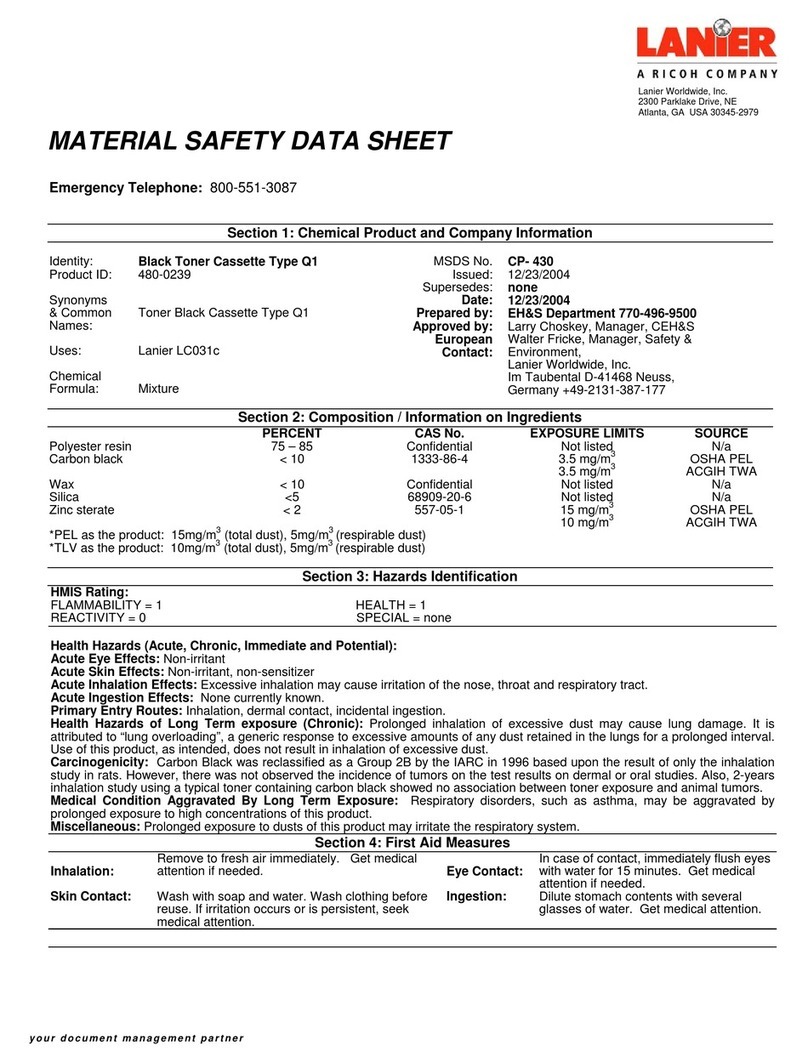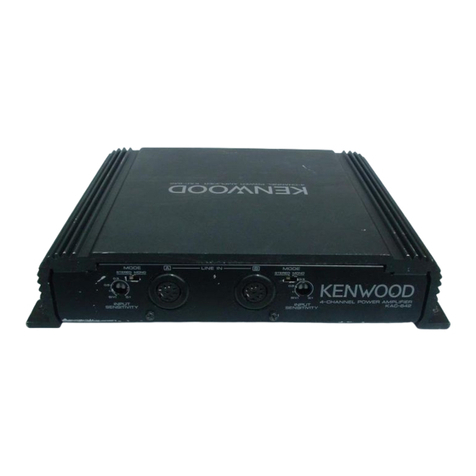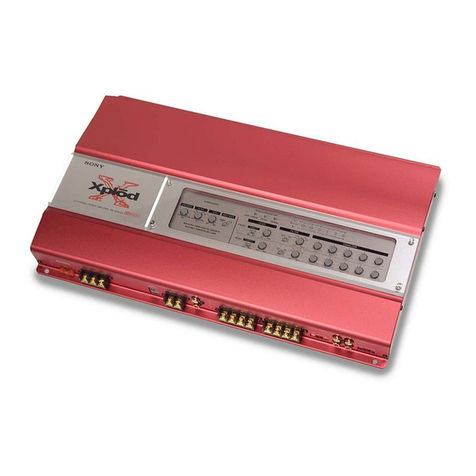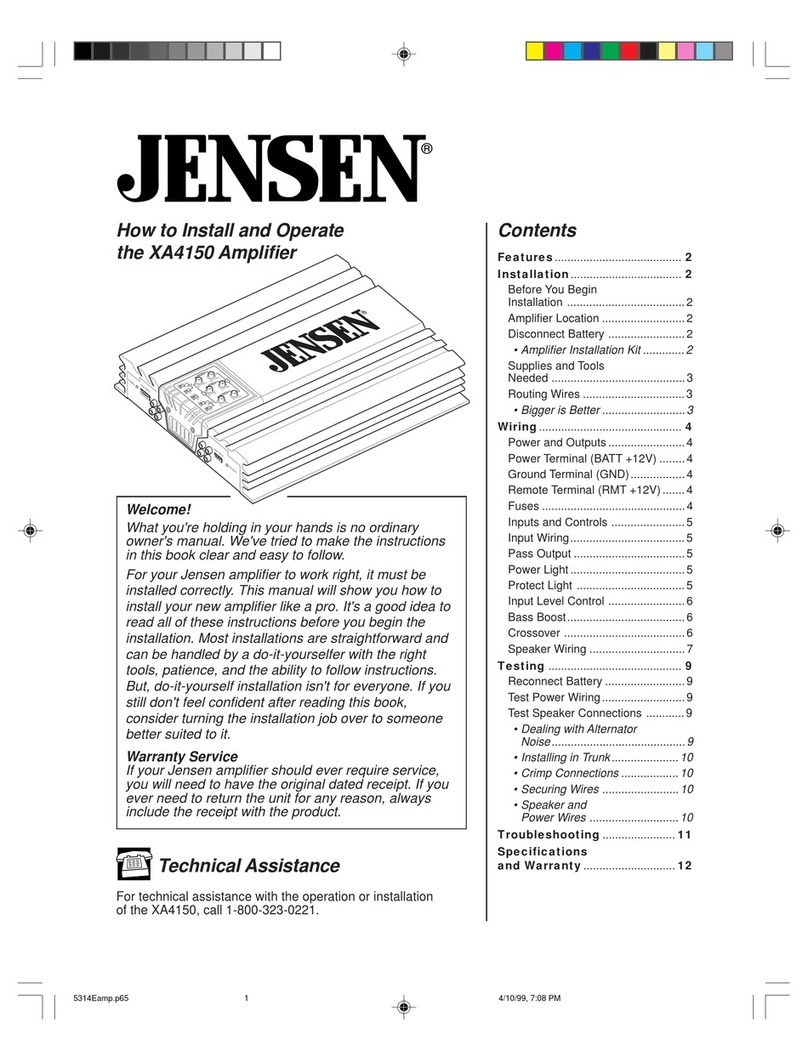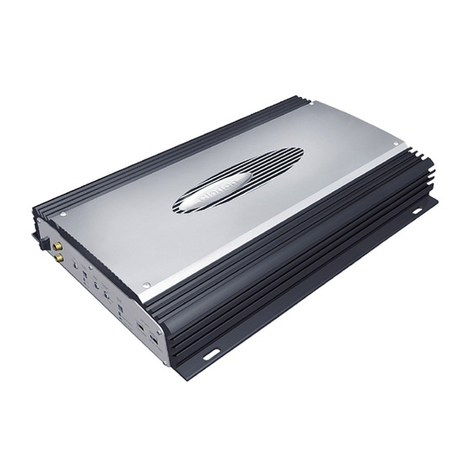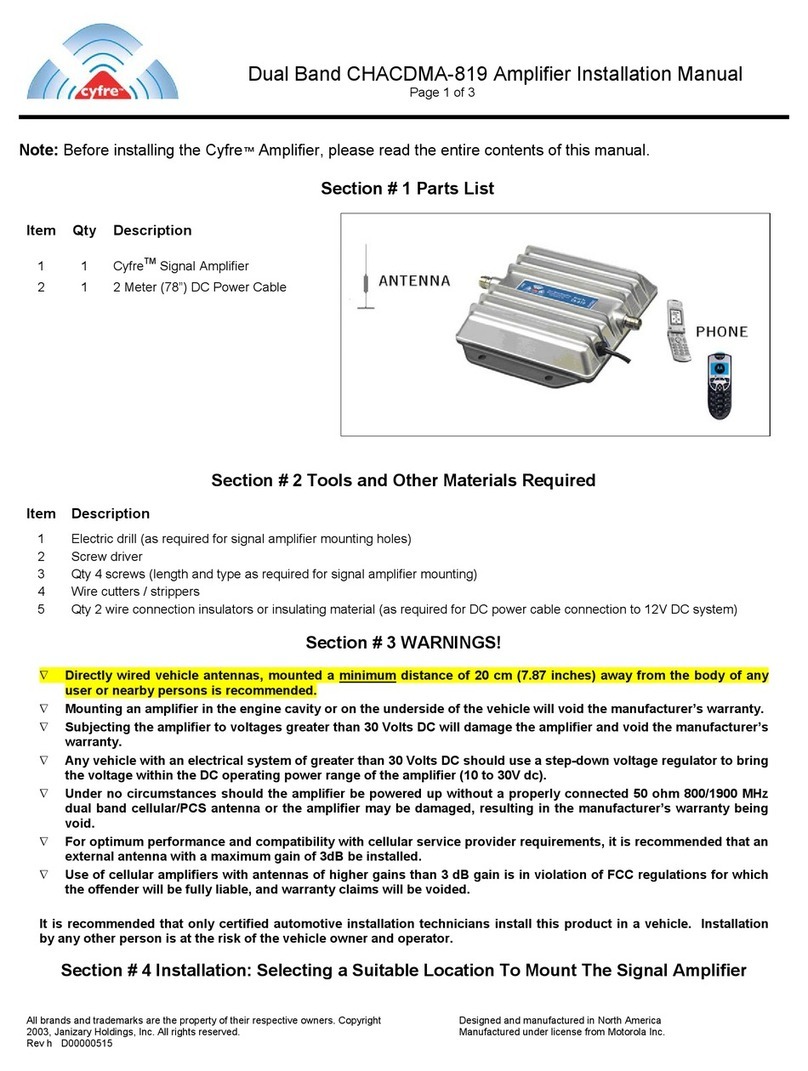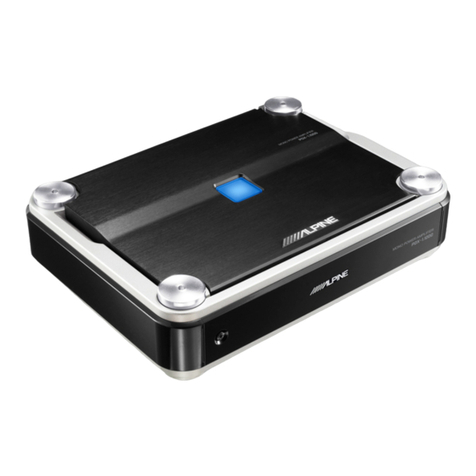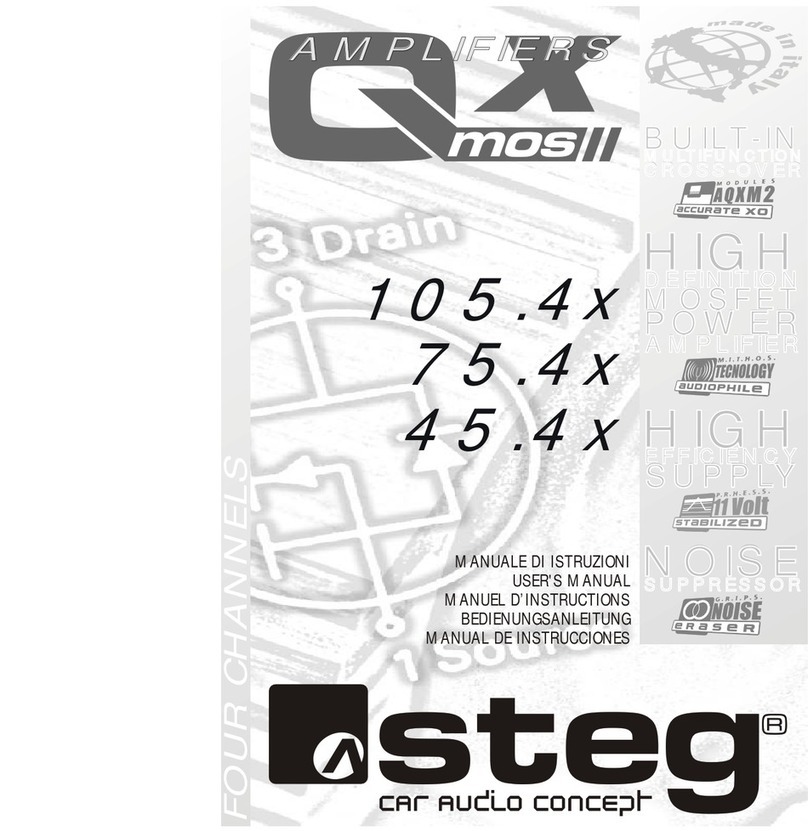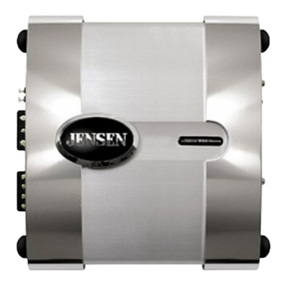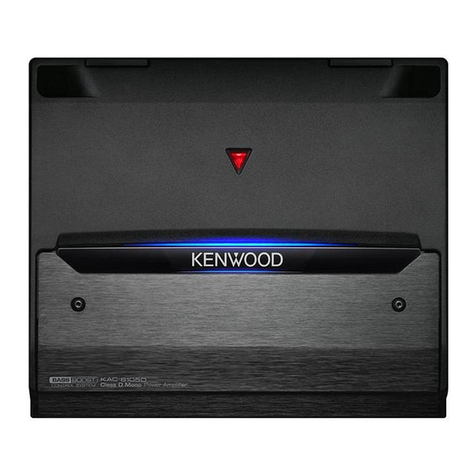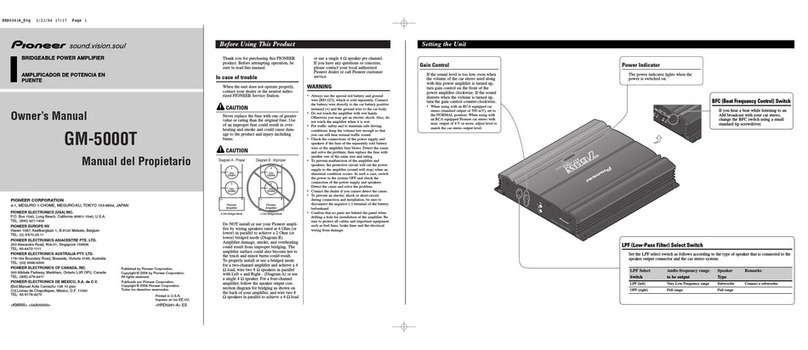Input Level control
The input level control, 6V – 0,3 V,
matches the output of your radio to
the input of the amplifier. After instal-
lation is complete, make sure the in-
put of the amplifier is turned down all
the way ( counter-clockwise at 6V ).
The high pass filter
blocks very low
frequencies from reaching
the speakers. It is mostly
used at say 60 Hz to
protect small speakers (
like 6 inch and smaller )
from deep bass.
High Pass filter X-D30, X-D40
Low Pass filter X-D40
The low pass filter is
mostly used for
subwoofers. It will allow
low frequencies only and
blocks higher frequencies.
A typical setting is 50 –
70 Hz.
6
Play a CD, make sure all bass or treble settings or
equalizer are flat, and turn the volume of the radio
up until you just start to hear distortion. Turn the
volume control down just a bit. On the amplifier
increase the input level control ( clockwise or to the
right ) until you just start to hear distortion, then back
the level control just a bit. Now your radio and
amplifier levels are matched.
Bass boost XD10, XD20, XD25, XD40
Bass boost is used to increase the
bass volume at a low frequency.
frequencies. You can select the
amplification between 0 dB ( no
amplification ) and +18 dB ( full
amplification ).
This function is used to compensate for
the bass box function and to adjust for
your own taste of bass. Set level control
at 0 dB if you want it to be inoperative.
The phase control can be set
continuously from 0 - 180 degrees.
This function is used together with
subwoofers. This is very useful when
you want to adjust the bass sound for
best front stage image. Start at 0 and
turn the control slowly clockwise until
you experience that the bass sound is
coming from the front. If you don’t get
the result you want, also try to phase
reverse the subwoofer connections and
make a new adjustment.
On models X-D20, X-D25 the phase
control and LP-filter can be switched
on-off.
Phase control X-D10, D20, D25, D-30
Subsonic filter X-D20, X-D25
The Subsonic filter
blocks the very deepest
frequencies from reaching
the subwoofers. It can be
set from 15 to 150 Hz and
can be switched on / off.
A typical setting for
subwoofer use is 25-30
Hz
Level
6V 0,3V
Phase
0 180o
Bass boost
0+18 dB
Subsonic
45 Hz
15 Hz 150 Hz Off On
80 Hz
Crossover
Flat
50 Hz 500 Hz
HP LP
Set the swich in position HP to activate the filter.
The filter can also be used as subsonic filter to remove
the very deepest frequencies from a bass box. The
typical setting is then around 25 – 50 Hz.
The slope of the High Pass filter is 12 dB / octave.
The filter can be switched off (position Flat) if you
want to run the amplifier in full range mode.
Crossover
Flat
50 Hz 500 Hz
HP LP
Set the switch in position LP to activate the filter.
Set the filter switch in FLAT position if you want to
run the amplifier in full range mode.
Subsonic filter X-D30
The Subsonic filter blocks the very
deepest frequencies from reaching the
subwoofers. It can be switched on / off.
The cutoff frequency is 25 Hz.
Subsonic
Off On
Features / crossovers
Low Pass filter X-D10, D20, D25, D30
The low pass filter is
mostly used for
subwoofers. It will allow
low frequencies only and
blocks higher frequencies.
A typical setting is 50 –
70 Hz.
On X-D30 the frequency is variable from 30 Hz to
150 Hz.
Crossover
50 Hz 500 Hz
150 Hz 250 Hz
